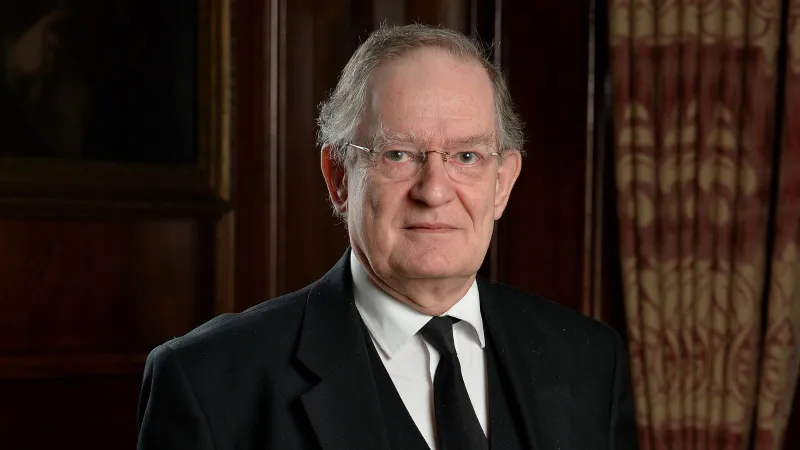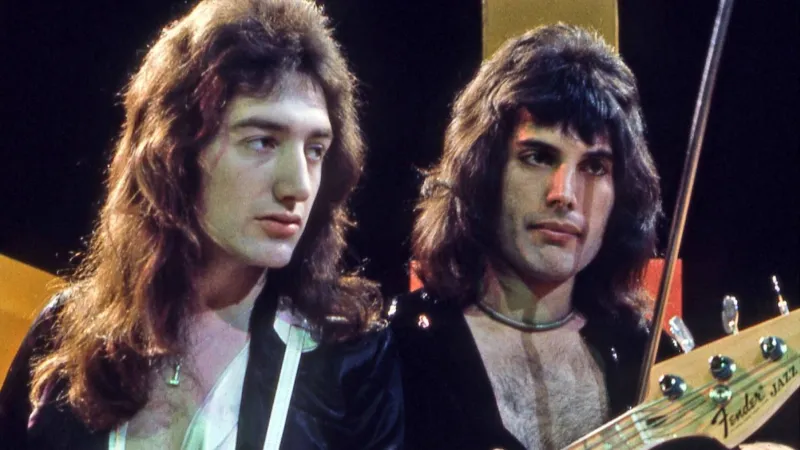Museum of Freemasonry makes an excellent trip out for anyone curious about Freemasonry. The museum, located in Freemasons’ Hall, hosts an extensive collection of artefacts that are sure to impress anyone. We have picked the ‘Top 5’ must see items to look out for during your visit to the museum.
Anderson's Constitutions
The first room you come across at the museum is the North Gallery, where you’ll find treasures from the first three centuries of English Freemasonry. Several of the ‘Top 5’ are in this room, the first being The Constitutions of the Free-Masons – also known as Anderson’s Constitutions, arguably the most important book in Freemasonry. Published in 1723, just six years after the formation of the first Grand Lodge of England, it set out the moral and legal framework for its lodges and the Grand Lodge itself, but it was much more than that.
The Constitutions were funded and published by two London booksellers, John Sennex and John Hooke, who took a risk that Freemasonry was about to explode onto the world. It was the work of three men, two former Grand Masters of England, George Payne and the Revd. Jean Theophilus Desaguliers, and a London-based Scottish priest James Anderson. Desaguliers reworked the old gothic charges of the stonemasons to provide a moral code for modern Freemasons and Payne on the general rules and regulations, whilst Anderson produced a mythical history of Freemasonry based on old stonemason legends and Anderson’s imagination, which was the weightiest part of the book. He also included some masonic songs that conclude the book.
The most striking part of The Constitutions is its frontispiece, the illustration opposite the title page. Engraved by John Pine it depicts the first noble Grand Master of the Grand Lodge of England, the Duke of Montagu handing over a scroll containing the Constitutions to his successor, the Duke of Wharton. The two men are flanked by their officers, one of whom carries gloves and aprons. The event takes place within an arcade depicting the five classic orders of architecture, over which Apollo rides his chariot, bringing light to the world. You can see a fuller description of the frontispiece and its meaning on the Museum of Freemasonry’s YouTube channel.
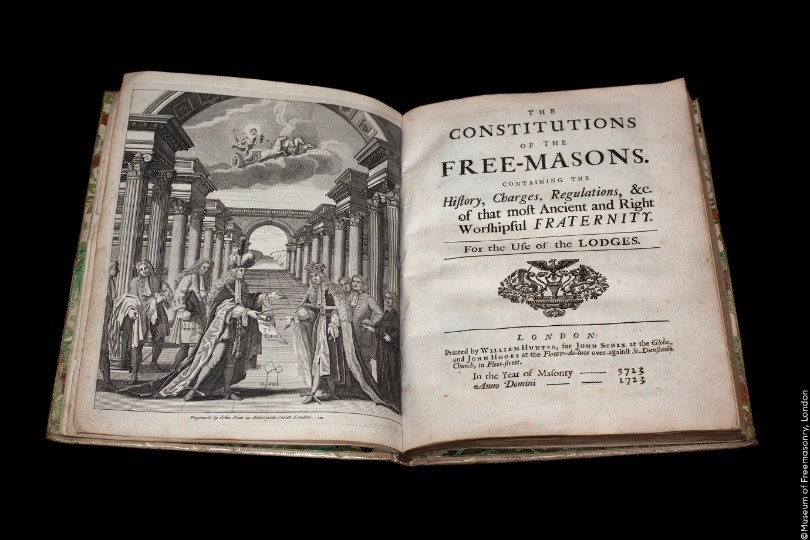
Letter of Prince Hall
The next North Gallery pick is a slice of masonic history from America. Freemasonry’s aims of conciliating ‘true friendship among persons that must else have remained at a perpetual distance’ were attractive to Americans but challenged concepts of inclusivity within colonial society. In 1784, an American freemason named Prince Hall obtained a warrant from Grand Lodge to form African Lodge in Boston, Massachusetts. A Bostonian leader in the African-American community, Hall championed equal treatment and education and wrote about the abolition of slavery and the slave trade. This letter is one of eleven sent by African Lodge now in the Museum’s archives. Five years after the Lodge’s foundation, Hall asked if Grand Lodge received its charitable donations and sent the Grand Secretary a sermon by the Rev. John Marrant, Lodge chaplain. An African-American preacher and missionary ordained in Bath, Marrant visited England twice before his death in Islington, London in 1791.
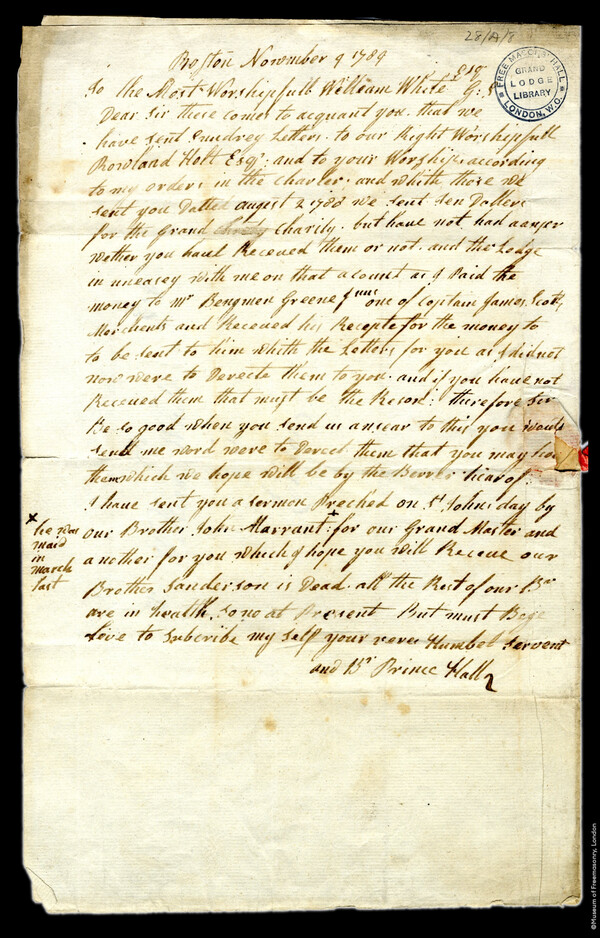
Gold Throne
As you walk into the North Gallery, you’ll struggle to miss the rather large gold throne in the middle of the second section. After the election of George, Prince of Wales (later George IV) as the first Royal Grand Master in 1790, the Moderns Grand Lodge commissioned a ceremonial throne and two warden’s chairs, which are now here at the Museum.
The throne today does not look like the one that welcomed the Prince in 1791. Originally it would have had the ostrich feather crest of the Prince of Wales on top. Many subsequent Grand Masters have used this throne but not all have held the title the Prince of Wales. A ducal coronet replaced the crest in around 1901 when the Duke of Connaught became Grand Master.
Between 2005-2008, conservation repair work was undertaken and after examination it was realised, each chair had been re-gilded several times. The culmination of many layers meant that the carving had been destroyed. New repairs were re-done using limewood and animal glue, missing elements of the carving were replaced, and the previous layers of gilding were removed. They were then water gilded using 23½ carat gold leaf – it took 190 books of gold leaf to complete! The restorers spent 3,765 hours repairing the three chairs and a specialist conservator restored the two globes.
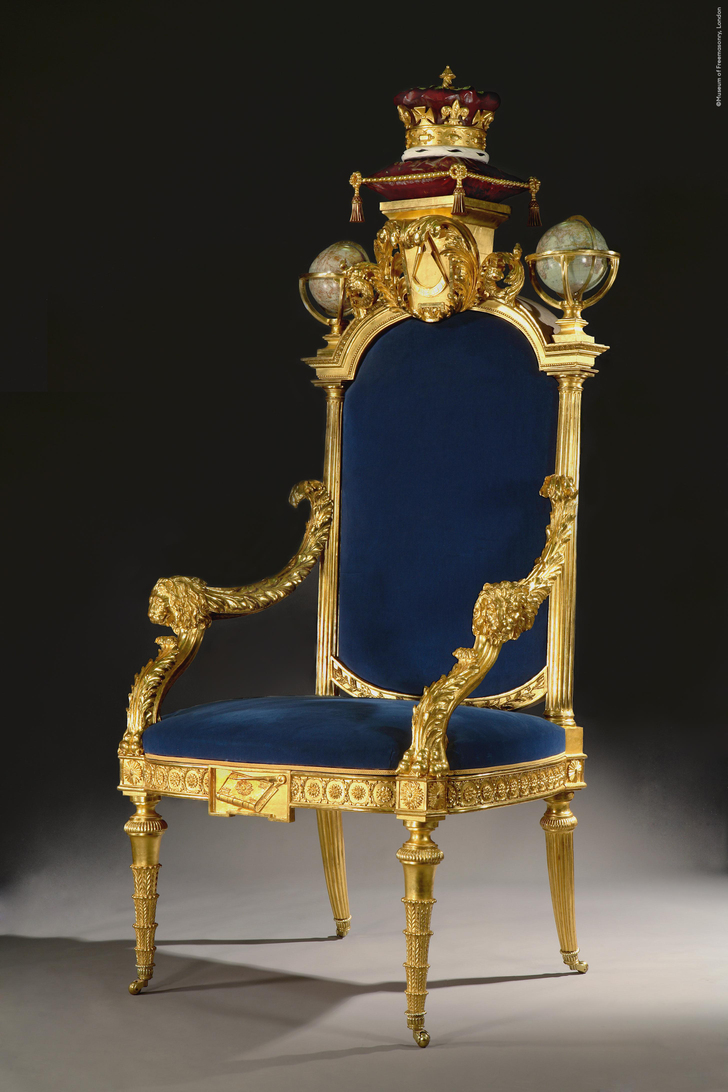
Winston Churchill's Apron
The last North Gallery item is the apron and pouch of one of the most famous people in British history, Sir Winston Churchill. Churchill was twice the Prime Minister of the United Kingdom; from 1940 to 1945 and from 1951 to 1955 and is generally credited with leading the country to victory during World War Two.
Churchill was initiated into Freemasonry at Studholme Lodge, No. 1591 (now United Studholme Alliance Lodge) in London on 24th May, 1901 and became a Master Mason on 25th March 1902. Churchill attended Studholme Lodge meetings regularly but never took office. In 1912 the former Prime Minister resigned from a number of organisations due to his political career taking off as he was unable to devote sufficient time to them.
After 1912 Churchill took an interest periodically in Freemasonry. In 1918 a petition was sent to Grand Lodge asking for permission to set up a Ministry of Munitions lodge. Churchill, then Minister of Munitions, was one of the petitioners. Grand Lodge turned down the application because its petitioners were drawn from a narrow base, which would become even narrower once the war was over.
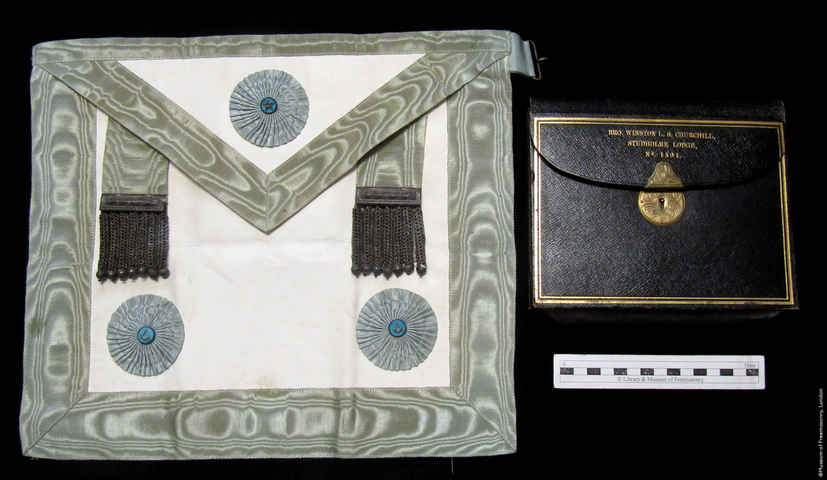
Porcelain Punchbowl
Our final ‘Top 5’ item is another unmissable one. In a dedicated case in the newly restored South Gallery, you can see an impressive punchbowl, possibly the largest example of Chinese export porcelain in the world. It was made in 1813 for Lodge of True Friendship, No. 218. The lodge was originally located in Bengal, India, however, after the end of the British rule in 1947 the bowl returned to England where the lodge continues to meet. The bowl holds nine and a half gallons and the recipe for the special punch is as follows:
4 quarts of Three Star Brandy
4 quarts of Jamaica Rum
4 quarts of Whisky
1 Orange Curacao
1 pint lime juice
2 tablespoons of Angostura Bitters
2 sliced oranges
2 sliced lemons
Sliced skin of one cucumber
2 pounds of sugar
Fresh herbs and spices
The punch was prepared at 1pm or ‘Tiffin’ time and just before the evening banquet, bottles of Bathgate soda water were ceremonially added by four lodge members standing at North, South, East and West of the bowl and the quota per lodge member was a fifth of a gallon (around 750ml). The flavour was strong and the recipe notes that a significant quantity of soda and brandy could be used to top up the bowl so the taste didn’t suffer.
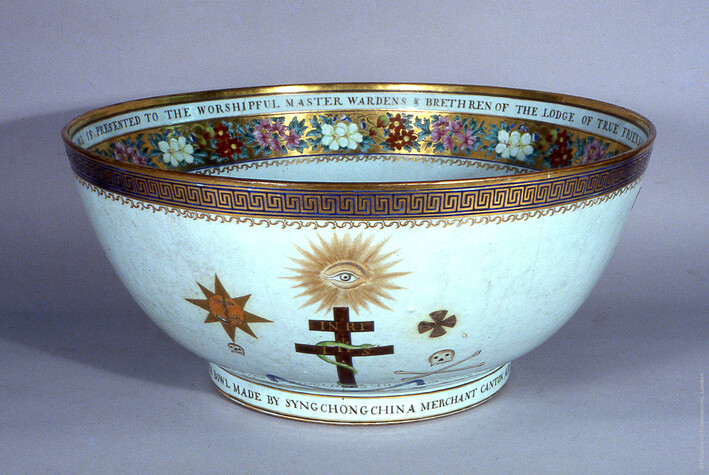
We hope you enjoyed learning about some of the items we have in the museum, but there are a lot more for you to see in person. Museum of Freemasonry is open 10-5 Monday to Saturday. Visit the museum’s website to find out more about the collections and to plan your visit.
